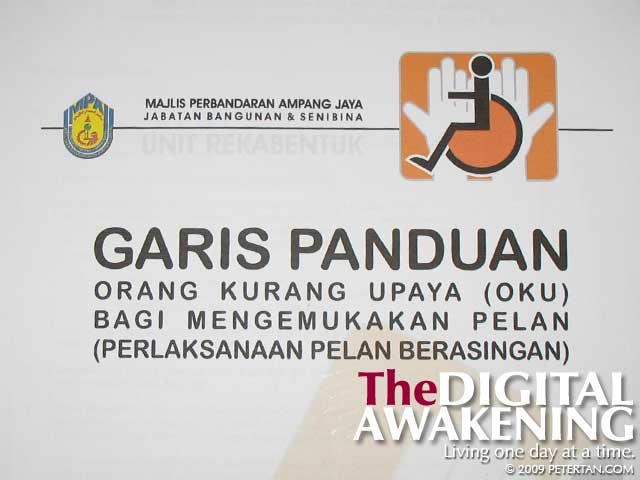Prime Minister Datuk Seri Najib Tun Razak invited Malaysians on Facebook and Twitter to ask him questions from 4.30 pm to 5.30 pm today. The Twitter hashtag is #tanyanajib while questions through Facebook can be submitted at www.facebook.com/najibrazak. I have never seen a Twitter timeline scroll down so fast. Due to the overwhelming response, the time to pose questions was extended to 6.00 pm.
I thought that this would be a good opportunity to pose the questions on longstanding disability issues to him and see if he responds. These issues are, after all, not new but ones that have gone unresolved for the longest time. Will Najib address any of them? Time will tell. By the way, at this moment, #tanyanajib is trending in ninth position worldwide. We sure have a lot of questions for the Prime Minister!
#tanyanajib Why are roads in KL full of potholes? Dangerous to motorcyclists. DBKL not doing a good job.
#tanyanajib Why is Prasarana/RapidKL so reluctant in using non-step buses? We don’t need to reinvent the wheel. Look at Japan and Australia.
#tanyanajib Why is full relief on income tax not given to purchase of rehabilitative and support equipment for disabled people?
#tanyanajib Will you amend UBBL 34A to make it COMPULSORY for all buildings and street environment to have access for disabled people?
#tanyanajib Will the MRT be barrier-free?
#tanyanajib What is the govt doing to prevent abuse of parking and toilet for disabled people?
#tanyanajib Public transport is not accessible. Disabled people stuck at home. What is the govt doing to resolve this?
#tanyanajib Will Malaysia enact punitive anti-discrimination law to protect the rights of disabled people?
#tanyanajib Join OKUs on a wheelchair ride around KL to experience the mega-problems we face everyday. Not much has changed since Akta OKU.
#tanyanajib Is the govt changing “orang kurang upaya” to something more empowering? We certainly are not people of lesser abilities.
What is the govt’s plan in making Malaysia barrier free? If yes, is there a time frame to it? #tanyanajib @ShahrizatJalil



